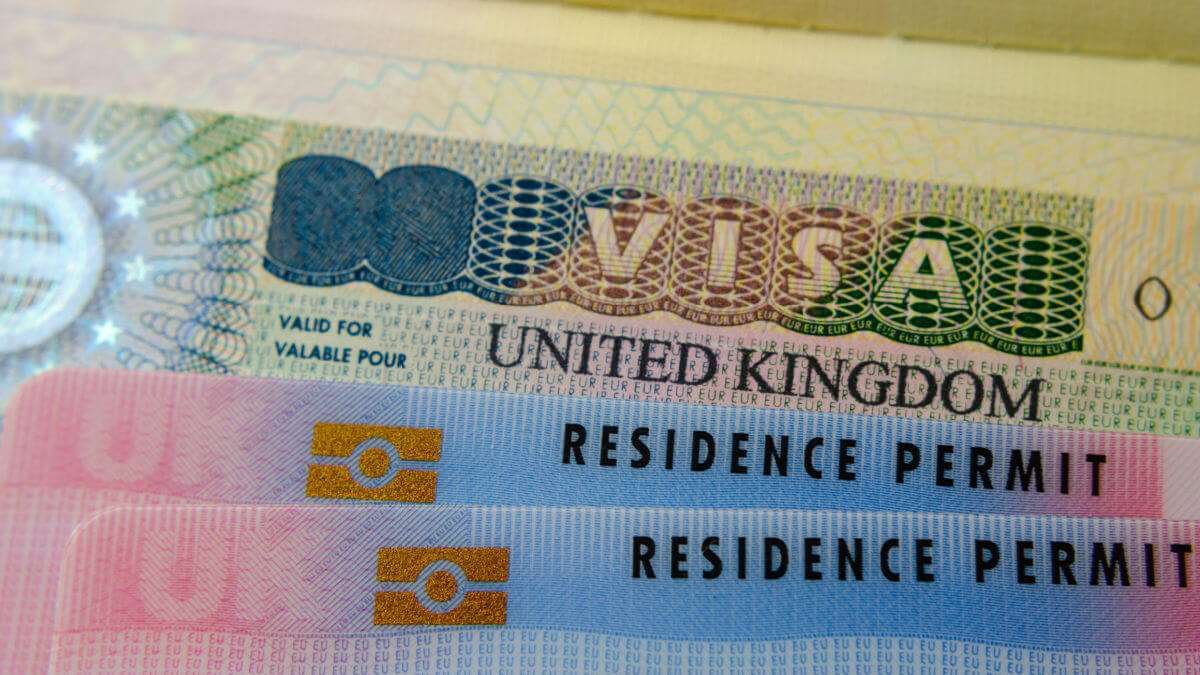Cheapest Universities in the UK for international students
Getting into a university in the United Kingdom has long been an aspiration for international students due to their world-class, top-notch excellence. There’s...

According to PEW Global, in 2015 $582 billion in remittances were sent by migrants back to their home countries. Of that portion, nearly $25 billion was sent from the UK alone. The vast majority of the senders relied on banks to transfer their money abroad and, unaware of the available options, lost millions each year.
It’s not just immigrants sending remittances who are being ripped off. Expats, digital nomads, international students, remote freelancers, parents sending money to children abroad and those on holiday – they’ve nearly all been swindled by a bank or money transfer company and had no idea.
Thousands of unsuspecting customers are ambushed every day. Financial companies know immigrants have limited options when they’re abroad and take full advantage of the fact. All those who have lived overseas at some point have likely fallen into money transfer traps without even realising.
Banks and money exchange services advertise ‘free transfers’ or ‘0% commission’ deals, all the while hiding their astronomical profit in poor exchange rates offered to customers. Airport exchange companies, money changers, online and in-person transfer services as well as regular banks all take part in this customary practice. They get money for the exchange rate you find on Google, but turn around and give consumers a bad rate. And then pocket the difference. Instead of helping the most vulnerable, they exploit customer weaknesses.
Many think simply skipping the money exchange services around airports is enough to avoid common pitfalls, but financial services across the board continually work to disguise their money-making schemes. They profit off consumer ignorance.
How does this happen?
There are plenty of tricks these less-than-transparent companies use to make money at immigrants’ expense. Hidden fees they only mention in the fine print; promises of free or no commission while inflating exchange rates in their favour; and a hoard of other misleading deals meant to further confuse consumers.
People are normally partial to well-known brand names and corporations know this. That’s exactly how companies like Western Union and PayPal continue to get away with their long, well-documented history of unfair practices. They understand that consumers won’t shop around. And a monopolised market is an easily manipulated market.
Consumers may still get their money in the end, but a large portion will be missing. Plain and simple, it’s robbery. The victim, however, rarely realises they were victimised.
Of the $25 billion immigrants sent in 2015 from the UK back to their home countries, most transfers were sent through banks and established companies to developing countries. There, money earned abroad improved the lives of families back home and boosted the local economies. With more and more people heading abroad for better paid work each year, this number will likely increase.
One in ten people in the world will send money abroad at some point in their lives. That means with large corporations charging up to 20% in mostly hidden fees, a large segment of people’s hard-earned cash is going to line the pockets of CEOs and not to families in developing countries who desperately need it.
As the remittance industry encompasses only money sent by immigrants to their home countries, these figures don’t include holiday-makers, businesses, nor digital nomads. Which means many more are losing on unfair exchange rates and hidden fees each time they move money abroad.
Every money exchange service starts with something called the mid-market or interbank exchange rate. Essentially, it’s the ‘real-time’ exchange rate found on Google that denotes how much each currency is worth. It’s the fairest rate. And the rate everyone - not just multi-million dollar corporations - deserve to receive. However, fairness isn’t a historical trademark of the industry.
Banks and established money exchange services start with the mid-market rate, and then decide how much of a difference they think they can get away with. Once they’ve come up with a number, they build their unfair profit into poor exchange rates. This is how they offer ‘low’ or ‘no commission’ transfers. They’ve already snuck their profit into the rate, with no one left the wiser.
Spread earnings are the most common way banks and money transfer companies profit at their customer’s expense. In relation to foreign exchange, it’s the difference between the mid-market rate the bank gets their currency at, and the actual rate that the bank or money transfer company charges customers. The amount of profit that companies sneak into their spread is often anywhere from 10-20%. Which means international money transfers are made much more expensive by the exorbitant and unfair rate differences.
In a world where consumers can check exchange rates at the click of a button, one would assume banks and money transfer companies could no longer get away with this gouging. However, they prey on the fact that many are perplexed by financial jargon and, thus, work to distract and misguide. In the midst of overly-simplified and unjustified claims, customers unwittingly fall for their cons. In the end, doing exactly what the banks and money transfer companies intended.
To add further insult to injury, foreign ATMs commonly offer something called Dynamic Currency Conversion (DCC). It’s touted as a service to enable consumers to be charged in their own, familiar home currency. But, as with other seemingly generous deals, it is, in essence, a scam. When a foreign ATM is allowed to do a conversion on the consumer’s behalf, it gives the bank permission to generate its own, bad exchange rate. Which means the ATM takes a further cut on top of the other fees already charged. When customers refuse DCC, machines ask, “Are you sure you want to proceed without conversion?” Again, preying on a customer’s fear of making the wrong decision; hoping to entrap them into the poorer exchange rate.
Companies depend on two primary ways to make money from their customers:
Spread earnings (offering consumers poor exchange rates and pocketing the extra)
Not so transparent fees (either fixed rates or fixed fees)
Spread earnings is an under-reported practice in the UK. And it keeps customers deceived about what they’re really paying. Though you might expect banks to be slightly more honest in comparison to money exchangers, you’ll find that’s not often the case. To see through the deception, it’s best to compare the real numbers.
The real exchange rate on Google:
1 GBP = 1.29840 USD
| Bank or money transfer company | GBP to USD exchange rate* |
|---|---|
| Barclays | 1 GBP = 1.2322 USD |
| HSBC | 1 GBP = 1.23644 USD |
| NatWest | 1 GBP = 1.24580 USD |
| PayPal | 1 GBP = 1.2602 USD |
| Post Office (money exchange service) | 1 GBP = 1.2676 USD |
| Santander | 1 GBP = 1.2430 USD |
| Travelex (money exchange service) | 1 GBP = 1.2614 USD |
| Google (the real rate) | 1 GBP = 1.29840 USD |
All exchange rates taken from provider websites around 08:30 UTC 19 May, 2017
When you convert those exchange rate spread earnings into a percentage, it’s clear that companies are taking quite a cut without anyone ever knowing.
Transfer fees are the second way banks and money transfer companies profit at the consumer’s expense. As with most services, the fees vary depending on the amount, the originating country and the receiving country.
Money transfer companies like Western Union charge fixed fees to send money abroad and their website won’t even allow consumers to see how much they’ll receive until an account is created. Another way they can entrap users - force them to sign up for their services before offering clear options.
The below shows the transfer fees of a number of well-known banks and money transfer companies sending £100 to India.
| Bank or money transfer company | Transfer fees for £100 to India |
|---|---|
| HSBC | £4 for HSBC > HSBC accounts |
| Barclays | £15 Standard online international fee (£25 Telephone/Branch) |
| Santander | £15 online, non-urgent, non-SEPA |
| Natwest | 0.3% (min £23, max £40). Plus £10 agents charge where applicable |
| Western Union | £1.90 bank transfer |
If you’re thinking of sending money abroad, it’s essential you check not only the transfer fees, but the exchange rate. This alone could save tens or even hundreds of pounds on each transaction.
Including both figures is how you can truly work out how much extra your transfer will cost. By including supposed deals like ‘fixed fee today’ or ‘no transfer fee’, companies can lure you into thinking you’re receiving a great offer, even though, at the end of the day it will be them who is profiting - not you.
The only foolproof way to find out if you’re being ripped off is to compare how much you’ll actually get in the end.
To give an example, if you send £1000 to the United States, providers will offer wildly varying dollar amounts - especially if you compare them to the actual rate on Google.
| Bank or money transfer company | 1000 GBP to USD prices* |
|---|---|
| Barclays | £1000.65 = $1233.00 |
| HSBC | £1000.45 = $1237.00 |
| NatWest | £1000.16 = $1246.00 |
| PayPal | £1000.00 = $1260.29 |
| Post Office (money exchange service) | £1001.89 = $1270.00 |
| Santander | £997.59 = $1240.00 |
| Travelex (money exchange service) | £998.89 = $1260.00 |
| Google (the real rate) | £1000 = $1298.40 |
All prices taken from provider websites around 08:30 UTC 19 May, 2017
That means using a bank or service provider to send £1000 will cost you anywhere from $28 to $65 just depending on who you choose. That’s a lot. And they won’t be telling you that upfront.
Shop around. Scour different sites. Don’t get ripped off. Compare and make sure you know how much you’re actually paying the company. There are more providers that can offer you better, fairer deals.
*Please see terms of use and product availability for your region or visit Wise fees and pricing for the most up to date pricing and fee information.
This publication is provided for general information purposes and does not constitute legal, tax or other professional advice from Wise Payments Limited or its subsidiaries and its affiliates, and it is not intended as a substitute for obtaining advice from a financial advisor or any other professional.
We make no representations, warranties or guarantees, whether expressed or implied, that the content in the publication is accurate, complete or up to date.

Getting into a university in the United Kingdom has long been an aspiration for international students due to their world-class, top-notch excellence. There’s...

When dreaming about higher education, many students have the United Kingdom in mind due to its prestigious universities and world-class academic programs....

Whether you’re commuting to work, planning a weekend getaway, or embarking on a grand adventure, Trainline offers a convenient and hassle-free way to book...

A guide to the residence permit in the UK, including what it is, who is eligible, how to apply and how much it costs.

Your essential guide to importing a car from the US to the UK, covering the costs, documents and procedures to follow.

Read our essential guide for foreigners buying property in the UK. Learn about fees, taxes, where to find property and a step-by-step guide to the process.